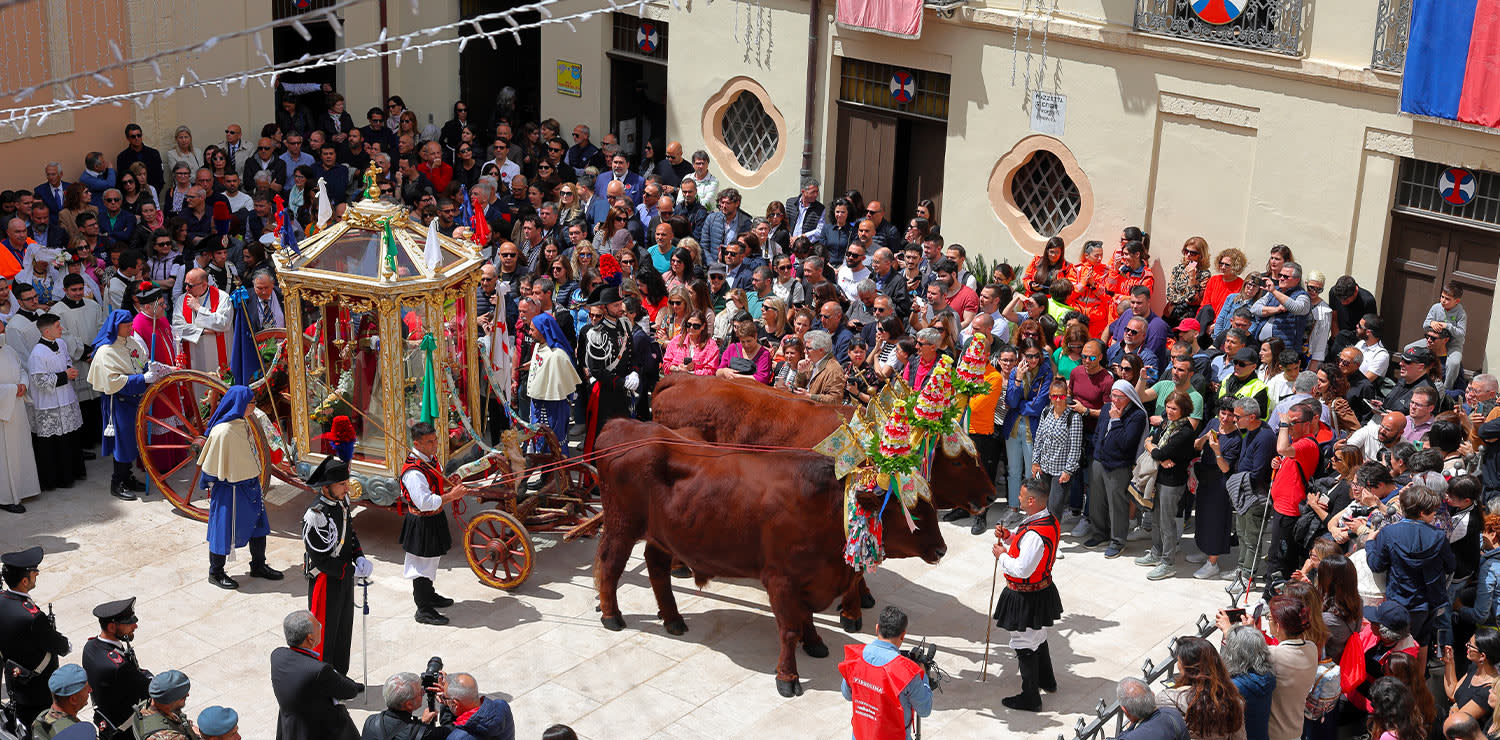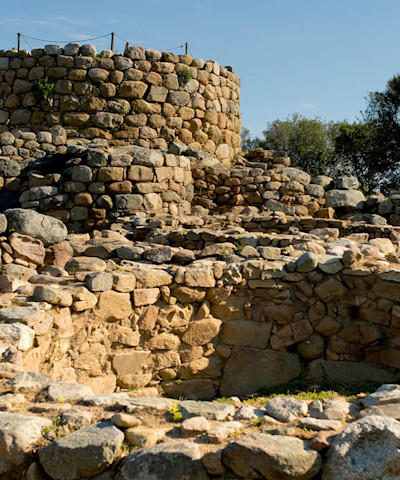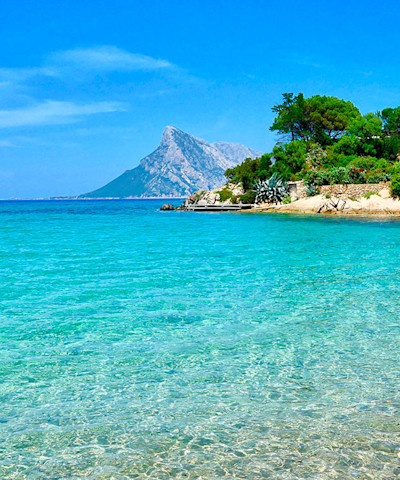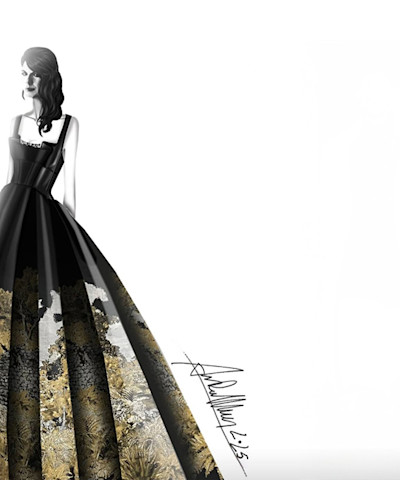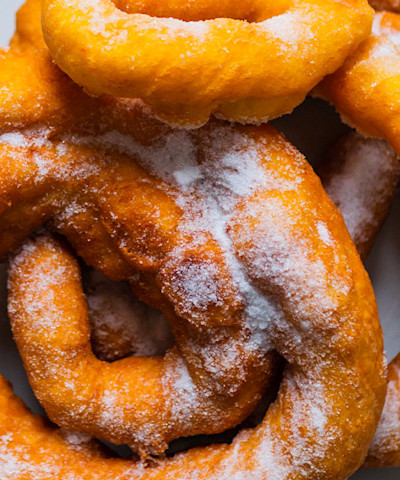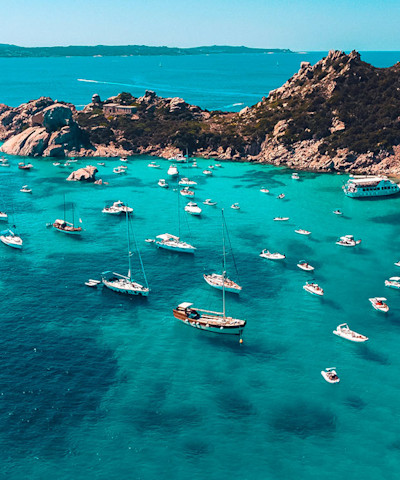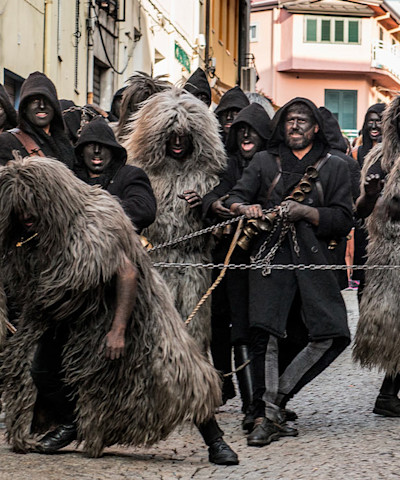Folklore in Sardinia: the island's best-loved traditional festivals
Appointments to mark in the diary for those who want to immerse themselves in the ancient customs of the Sardinian people
Sardinia is a land of millenary traditions, folklore and history. From the north to the south of the island, there are many events on the calendar for those who wish to fully immerse themselves in the ancient customs of the Sardinian people. Between the sacred and the profane, the common denominator of these events is the beauty of the traditional costumes and the evocative music that accompanies them. The sound of the launeddas and the accordion provides the background to some of the island's most famous celebrations.
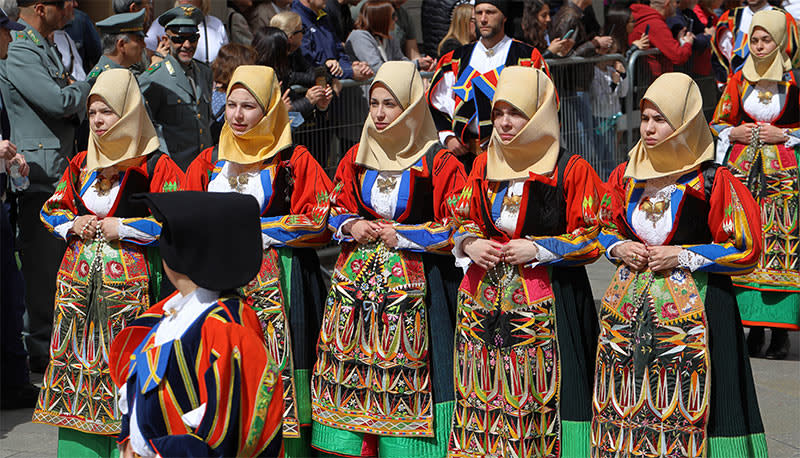 Feste e Folklore in Sardegna
Feste e Folklore in SardegnaFesta di Sant'Efisio
We start in the Sardinian capital, Cagliari, where the Feast of Saint Ephisius, who saved the city from the plague in 1656, is celebrated on 1 May. Hundreds of people dressed in the most sumptuous traditional clothes gather in the streets of the centre to thank him. The festival is a religious procession, but it is also a kind of Sardinian fashion show of the highest quality. Some of the participants parade on foot, others in the saddle of magnificent horses, many of them of the Anglo-Arab-Sardinian breed, while others are on tracas, large decorated carts pulled by a yoke of oxen, decorated with traditional objects of work in the fields and with the abundance of the harvest. Their presence evokes the journey of devotees from Campidano and Sulcis to the place of the saint's martyrdom. In 2024, the 368th procession for Saint Ephisius was celebrated. As many as 85 cultural and folkloristic associations, with 2,500 devotees on foot in traditional attire, took part in the procession with their customary and well-established solicitude. Together with them, the most representative musical and ethnographic heritage of the entire region and the singing of rosaries intoned in the Sardinian language with the gòcius in honour of the saint. Further enriching the procession, and giving it additional solemnity, is the presence of groups of launeddas and sulitus players.This evocative celebration has been repeated almost unchanged every year since 1657, with the pilgrimage from Cagliari to the site of the saint's martyrdom and the rituals of the vow breaking by the municipality of Cagliari.The faithful accompany the statue of Saint Ephisius, retracing the route from the prison where he was imprisoned to the place of his martyrdom in Nora, before returning to his Church in Stampace on 4 May by midnight.
Cavalcata Sarda
From the south to the north of Sardinia: in Sassari, on the penultimate Sunday in May, the Cavalcata Sarda is staged. The city becomes the focal point of a parade of horses, traccas (ox-drawn carts decorated with flowers) and participants in traditional costumes who come to the city from every town in Sardinia.According to historical records, the first edition of the cavalcade dates back to 1711, when the Municipal Council of Sassari, at the end of the Spanish domination, resolved to ‘make a cavalcade’ in homage to King Philip V of Spain.All the nobility of Sassari took part in the event, proudly displaying their costumes embellished with filigree jewellery and embroidery from the expert work of seamstresses. The Cavalcade that we can admire today originated on 20 April 1899, when a parade of Sardinian costumes was organised in honour of Umberto I of Savoy and Queen Margherita, who had come to the city for the inauguration of the monument to Victor Emmanuel II, designed by Giuseppe Sartorio and erected in Piazza d'Italia. The event lasts all day and, in the afternoon, moves from the city centre to the hippodrome, where horses and riders perform daring parades and acrobatic figures. The day's festivities end in Piazza d'Italia with traditional Sardinian songs and dances, to the notes of launeddas and accordions, which continue through most of the night. The Cavalcata is one of the main festivals in Sardinia, during which folk groups from all over the island gather, and is the only purely secular event.The festive atmosphere, in which Sardinian folklore and culture find ample space, is also accentuated by the numerous stalls in the city centre, selling Sardinian sweets such as nougat and typical local handicrafts, along with kiosks from which the smell of roasted meat and sausage wafts.
Festa dei Candelieri
The city of Sassari hosts the Festa dei Candelieri, in Sassari dialect ‘Sa Faradda’, meaning the descent. On 14 August, a very important celebration takes place: ‘La discesa dei candelieri’. The festival, at least five centuries old, is organised to fulfil the vow made to the Virgin Mary who, according to popular devotion, would put an end to a terrible plague and save the city. It is a procession organised by thirteen ‘gremi’ or medieval trade guilds, in which each member of the gremio carries, together with the others, a large, very heavy wooden candlestick along the main street of the city to the church of St Mary of Bethlem. It is a long, difficult and tiring ritual, punctuated by the rhythm of the drums and the shouts of incitement from the gremio leaders to the members who hold up these tall wooden votive candles with the strength of their arms. Documents testify to the rootedness of this tradition and the passionate involvement of citizens since the 16th century. Since 2013, this ceremony has belonged to UNESCO's intangible heritage. In the course of its long history, the Descent of the Candlesticks has taken on specific forms. It all begins when the town crier announces the Descent and the gremio dei Massai meets the mayor at the Palazzo Ducale. Together they head to the Palazzo di Città where the gremio's flag will be displayed. The citizens are involved from the morning with the rite of the Vestizione, and then gradually in the various stages in which the festival is articulated. Early in the morning, when each gremio decorates with flowers, paper garlands and flags the wooden candlestick that it will carry on its shoulders along the procession route. Elements are often added to characterise the bearers. The gremio of the massai, landowners, and the gremio of the peasants add ears of wheat to their candlestick. Dressing takes place in the seat of the gremio, or near the home of the gremiante in charge of the candlestick, called obriere di Candeliere. Along the way, the bearers make the candlesticks perform evolutions in a kind of dance that is considered auspicious. According to tradition, the more the candlestick is ‘baddarinu’, i.e. dancing, the better the year will be. To the rhythm of the drummer, the heavy wooden structure swings through the crowd, turns on itself, and suddenly changes direction. It is a performance that requires considerable physical effort. The Faradda ends late at night, when the candlesticks enter the church of Santa Maria di Betlem and receive the final blessing.
Festa di San Simplicio
The city of Sassari hosts the ‘Festa dei Candelieri’, in Sassari dialect ‘Sa Faradda’, meaning the descent. On 14 August, a very important celebration takes place: the ‘Descent of the Candlesticks’. The festival, at least five centuries old, is organised to fulfil a vow made to the Virgin Mary who, according to popular devotion, would put an end to a terrible plague and save the city. It is a procession organised by thirteen ‘gremi’ or medieval trade guilds, in which the members of each gremio carry together a large and heavy wooden candlestick along the main street of the city to the church of St Mary of Bethlehem. It is a long, difficult and tiring ritual, punctuated by the rhythm of the drums and the shouts of incitement from the gremio leaders to the bearers, who support these tall wooden votive candles with the strength of their arms. Documents testify to the rootedness of this tradition and the passionate involvement of citizens since the 16th century. Since 2013, this ceremony has belonged to UNESCO's intangible heritage. In the course of its long history, the Descent of the Candlesticks has taken on specific forms. It all begins when the town crier announces the Descent and the gremio dei Massai meets the mayor at the Ducal Palace. Together they head to the Palazzo di Città, where the gremio's flag will be displayed. The townspeople are involved from the morning with the rite of Vestizione, and then gradually in the various stages of the festival. Early in the morning, each gremio decorates its wooden candlestick with flowers, paper garlands and flags, elements that often characterise the bearers. For example, the gremio of the Massai, landowners, and that of the farmers add ears of wheat to their candlestick. Dressing takes place in the seat of the gremio, or near the home of the gremiante responsible for the candle, known as the obriere di Candeliere. Along the way, the bearers make the candlesticks perform evolutions in a kind of dance that is considered auspicious. According to tradition, in fact, the more the candlestick is ‘baddarinu’, i.e. dancing, the better the year will be. To the rhythm of the drums, the heavy wooden structure swings through the crowd, turns on itself and suddenly changes direction. It is a performance that requires considerable physical effort. The Faradda ends late at night, when the candlesticks enter the church of Santa Maria di Betlem and receive the final blessing.
Festa del Redentore
In the heart of the island, in one of its most characteristic centres rich in tradition and culture, the Festa del Redentore is celebrated. In Nuoro, on 29 August, the rite of the Feast of Christ the Redeemer is renewed every year. It is a procession that starts from the city and reaches Mount Ortobene, which dominates Nuoro, to commemorate when, in 1901, a brass statue of Christ the Redeemer was placed on the summit. It is a religious festival that gives rise to a sumptuous parade of pilgrims in magnificent traditional costumes. Originating as a tribute to the statue that towers over the city, the festival has also taken on folkloric connotations over time. Today, its soul is twofold: on the one hand, it is a time dedicated to religious celebrations, and on the other, it is a spectacular parade of groups in traditional costumes from all over the island. The festival is a symbol of the many faces of Barbagia, a land that preserves intact millenary places and traditions and still loves to tell its story, as the great writers and men of letters to whom Nuoro gave birth have done. The faithful gather in front of the Cathedral of Santa Maria della Neve, accompanied by the gosos, sacred songs in Nuoro. From here, a long pilgrimage of thirteen stations starts, about six kilometres on foot, to the top of Monte Ortobene. A religious procession coloured by festively decorated carts pulled by massive oxen. The most intense moment is the celebration of the solemn mass, accompanied by procession and singing. The pilgrimage is preceded, the evening before, by a torch-lit prayer procession along the churches of the old town centre.
Carnival festivities and traditions
In Sardinia, there are many towns and villages that celebrate Carnival: in Tempio Pausania in Gallura, in Gavoi, Bosa and Mamoiada, this tradition is very much felt and is renewed every year in February.
In Gallura, the city of Tempio Pausania organises its Carrasciali Timpiesu, which over the years has become the most important allegorical carnival on the island, a member together with the Carnival of Viareggio, Cento, and Fano of the Federazione Italiana Carnevali. In 2018, the Ministry of Culture and Tourism placed the Carrasciali Timpiesu in sixth place for beauty in Italy.
The event attracts tens of thousands of participants and spectators and consists of suggestive allegorical parades through the historical centre, whose floats mainly represent themes among which political and social satire prevails, crowned by a long and fascinating tradition. During the ‘six days’ of the Carrasciali Timpiesu, i.e. the six days of festivities, which kicks off every Shrove Thursday of the year and ends on Shrove Tuesday, a series of daily and nightly events take place, among which the four main parades prevail: the opening parade on Thursday, two intermediate parades on Sunday and Monday, dedicated to children, and the closing parade on Tuesday, which ends with the trial and burning in the square of ‘His Majesty King George’, a float representing the ruler of the Carnival of Tempio. The staging in town of numerous masked balls and enthralling dances, in conjunction with the parades, makes the Carrasciali Timpiesu unique.
In Mamoiada, on the other hand, the carnival parade is composed only of men: Mamuthones wearing sheep furs, cowbells and wooden masks while the red-clad Issohadores hold a ‘lasso’ and direct the parade. They will stop at each of the 40 or so bonfires lit in the town's open spaces to make three laps around the fire and in this way repeat a thousand-year-old ritual linked to rebirth, the fertility of the animals and the fertility of the land. It is one of the oldest traditional events in Sardinia: unknown to the world until the 1950s, it later became famous thanks to the masks of the Mamuthones and Issohadores, now a symbol for the entire island. It officially starts on 17 January with the feast of Sant'Antonio Abate and goes on for several weeks, culminating with the parades on Sunday and Shrove Tuesday. The entire population is involved in the celebration with spontaneous masquerades and traditional costumes. The centre of Carnival is the main square of the village where the Mamoiadini perform the traditional round dance. A social ritual with well-defined rules broken only by the passage of the masks. An orderly and evocative procession. The square comes to a halt as they pass and everything becomes almost motionless where the only movement is that of the Mamuthones and Issohadores and the only sounds that dominate everything are those of the cowbells. The Carnival of Mamoiada is not just masks, it is a true moment of conviviality and togetherness. Typical sweets and cannonau wine are an integral part of the feast and are offered to Mamoiadini and visitors.




